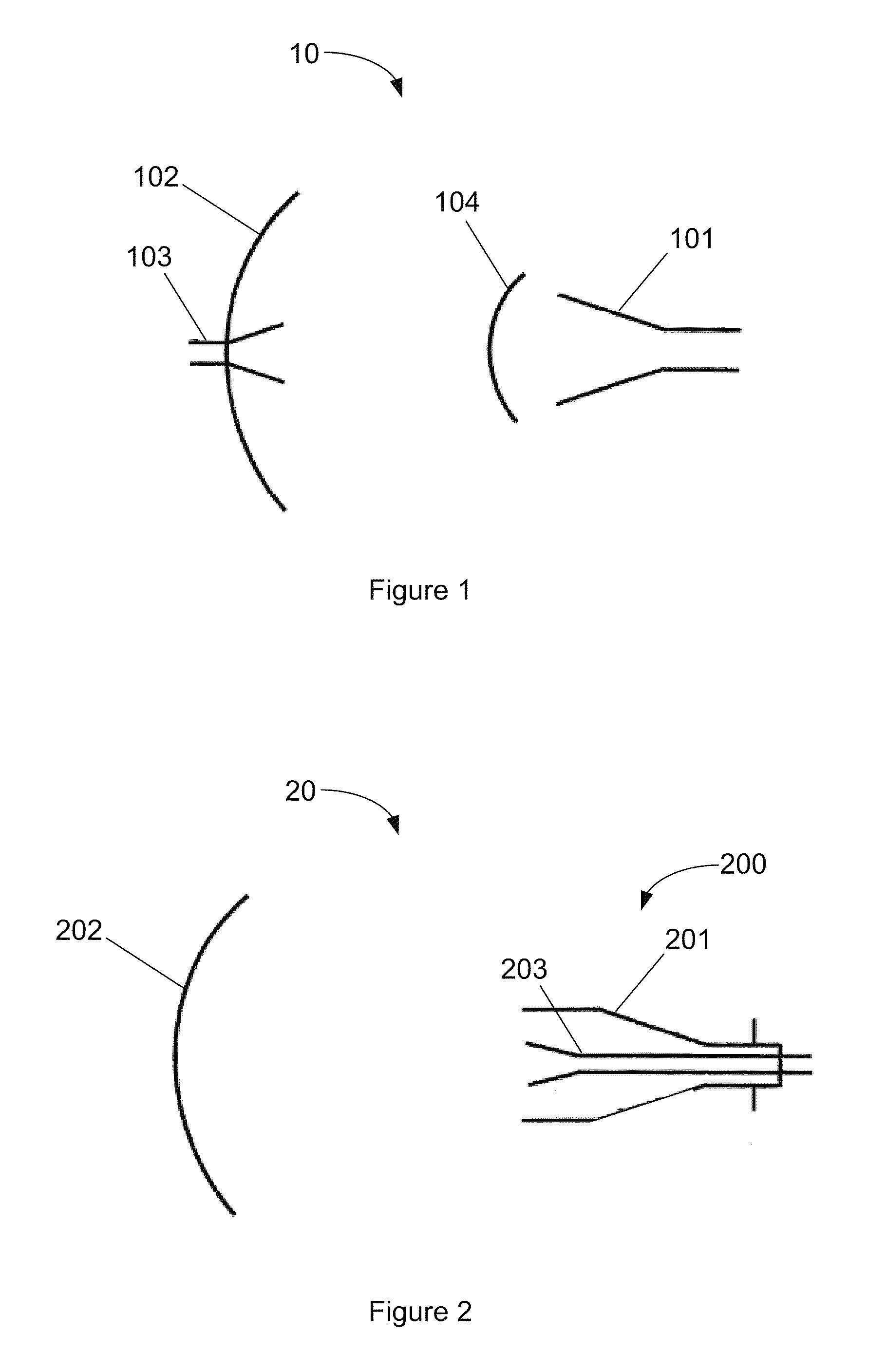Dual-band feed horn with common beam widths
a technology of beam width and horn, applied in the field of dual-band antennas, can solve the problems of consuming valuable space on spacecraft, reducing efficiency, and reducing so as to achieve the same angular beam width, reduce the pointing requirement of the antenna system, and narrow the angular beam width
- Summary
- Abstract
- Description
- Claims
- Application Information
AI Technical Summary
Benefits of technology
Problems solved by technology
Method used
Image
Examples
Embodiment Construction
[0031]To overcome at least some of the disadvantages of existing dual-band antennas listed above, there is a need for an inexpensive antenna solution that works over two widely separated frequency bands. In addition, it is desirable that the co-polar radiation patterns of the antenna at the high frequency and at the low frequency be substantially the same to simplify the pointing requirements of the antenna system to maintain the communication link.
[0032]The present disclosure is made with examples of a single-offset reflector antenna and a Cassegrain dual-reflector antenna, both using a single dual-band feed horn. It will become apparent, however, that the concepts described herein are applicable to antenna systems of other types and configurations.
[0033]Horn antennas are frequently used as feed horns in reflector antenna systems. The generation of TE modes in a conical horn was discussed in U.S. Pat. No. 7,463,207 and this nonessential matter is incorporated herein by reference. T...
PUM
 Login to View More
Login to View More Abstract
Description
Claims
Application Information
 Login to View More
Login to View More - R&D
- Intellectual Property
- Life Sciences
- Materials
- Tech Scout
- Unparalleled Data Quality
- Higher Quality Content
- 60% Fewer Hallucinations
Browse by: Latest US Patents, China's latest patents, Technical Efficacy Thesaurus, Application Domain, Technology Topic, Popular Technical Reports.
© 2025 PatSnap. All rights reserved.Legal|Privacy policy|Modern Slavery Act Transparency Statement|Sitemap|About US| Contact US: help@patsnap.com



